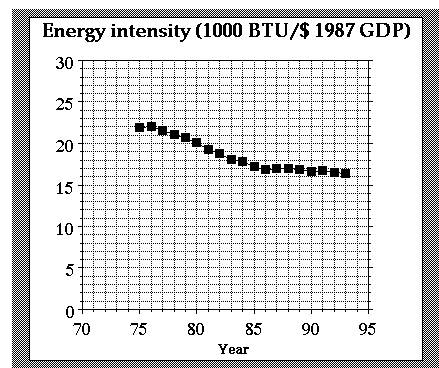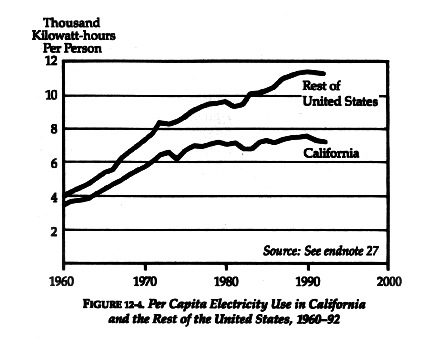
The two most important energy-related decisions that we make as individuals are (a) the purchase of an automobile, and (b) the selection of a heating/cooling system for our home. These decisions can not only save us big bucks but they can also help minimize air pollution. We'll discuss these issues first.
For example, at one time or another you probably have received an advertisement from your local electric utility, urging you to buy an electric heat pump. The course material presented in Chapter 19 and elsewhere in our textbook allows you to understand and scrutinize such an advertisement.
Here is a typical one (from West Penn Power):
"What's the best heating system available? The electric heat pump. It's the most efficient heating system you can buy to provide winter comfort you need at the lowest cost."
To substantiate this claim, the following costs are given:
-electric heat pump: $7.32/million BTU
-gas furnace: $8.32/million BTU
-oil furnace: $14.38/million BTU.
These numbers are based on the critical assumptions that electricity costs 5.5 cents per kilowatthour, that natural gas costs 6 dollars per thousand cubic feet, and that oil costs $1.20 per gallon. Furthermore, the efficiencies of the gas and oil furnaces are assumed to be 70 and 60%, respectively. The coefficient of performance of the heat pump is assumed to be 7.5.
For us it will be easy to verify these numbers and conclude whether WPP's claim is justified or not.
Furthermore, because we rely so much on electric energy for everything we do, it is in our best interest that electricity remain affordable, even as we expect the electric power plants to stop polluting the environment. So we'll examine briefly the challenges that this industry is facing in the coming decades.
The common theme in this entire section is ENERGY CONSERVATION. The cheapest and the environmentally friendliest energy is energy not consumed ('negawatts', instead of megawatts, as advocated by Amory Lovins). The best way to track a country's ability to conserve energy is by monitoring its 'energy intensity'. An update for the U.S. is provided below.

Between 1975 and 1993, even though the gross domestic product (in 1987 dollars) has increased from 3.2 trillion to 5.1 trillion, the energy intensity (expressed either in megajoules per GNP dollar or in thousand BTU's per GDP dollar) has continued to decrease. It probably remains higher than that of other industrialized nations and thus invites us all to continue on this commendable conservation path. A closer look at the above graph, however, reveals a disturbing trend: We are good at conserving only when the price of energy is very high. Since 1985, when most people forgot about the oil shocks of the 1970's, no further decrease in energy intensity has been achieved. We should all find out what California is doing, because Californians are apparently doing much better than the rest of us, as shown on the electricity consumption chart below (from "Power Surge", by C. Flavin and N. Lenssen, Worldwatch Institute, Norton, 1994).
